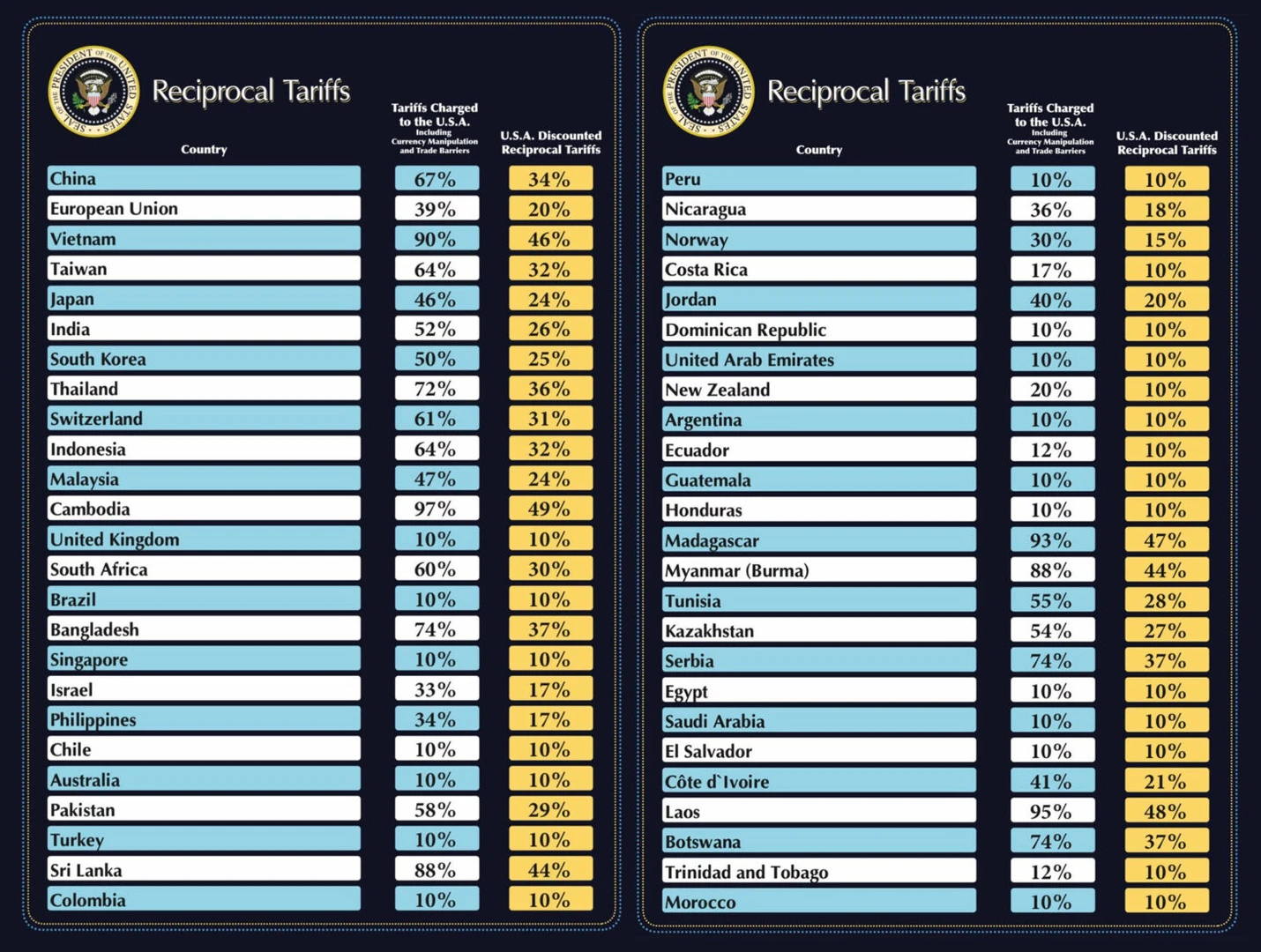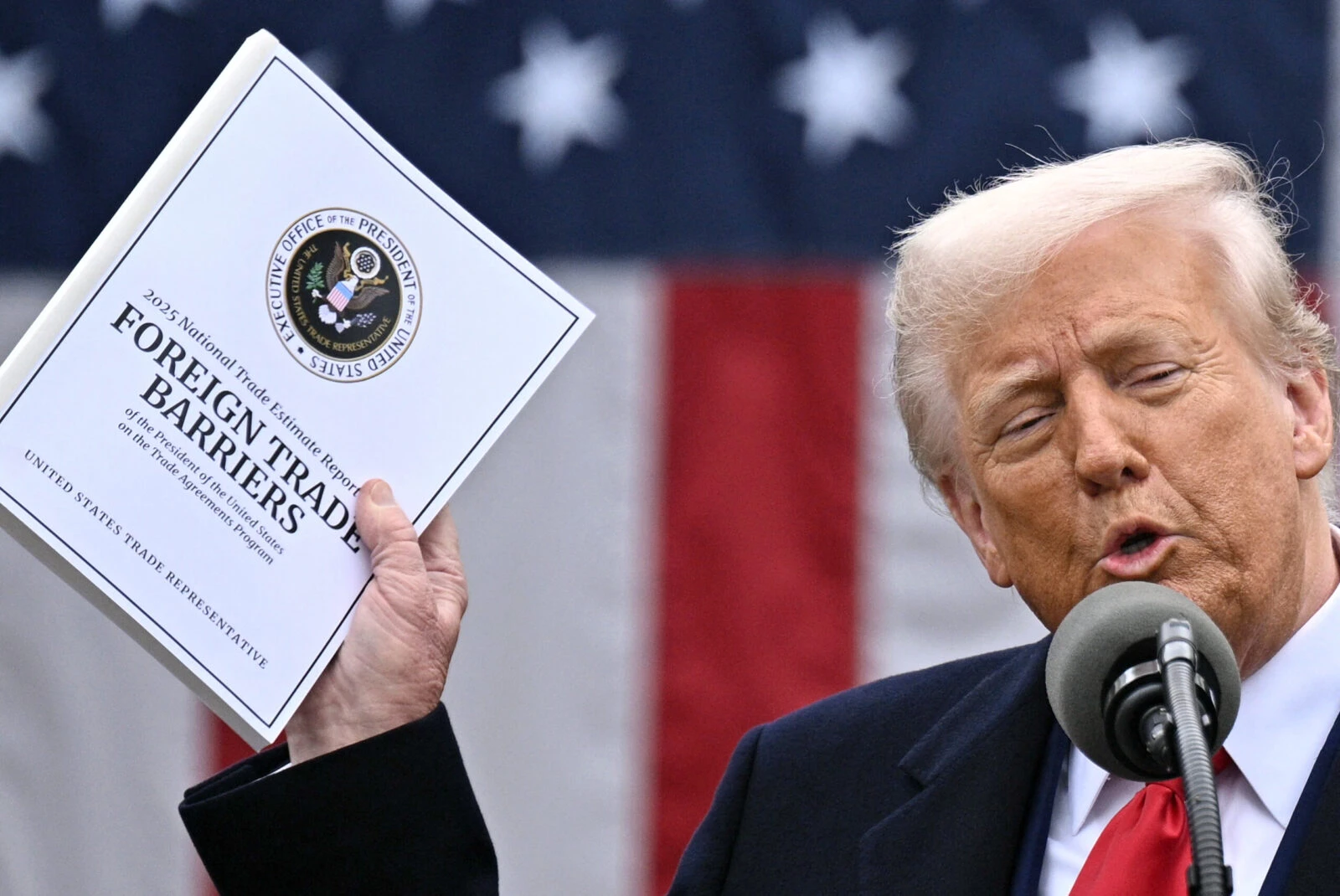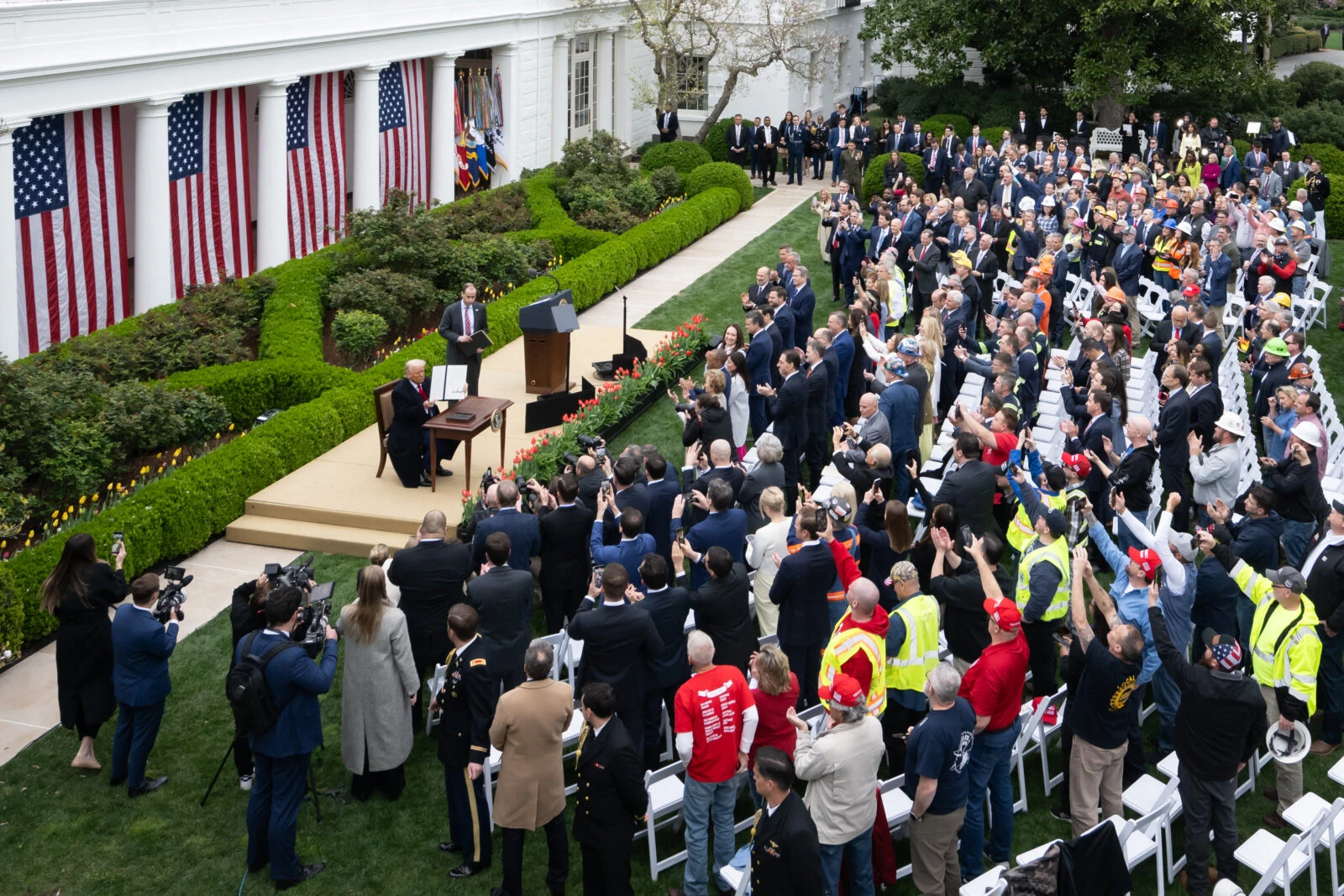Trump imposes 10% tariff on Türkiye, effective April 5
 US President Donald Trump waves as he walks off stage after delivering remarks on reciprocal tariffs during an event in the Rose Garden entitled "Make America Wealthy Again" at the White House in Washington, DC, on April 2, 2025. (AFP Photo)
US President Donald Trump waves as he walks off stage after delivering remarks on reciprocal tariffs during an event in the Rose Garden entitled "Make America Wealthy Again" at the White House in Washington, DC, on April 2, 2025. (AFP Photo)
United States President Donald Trump signed an executive order Wednesday, delivering on his long-promised plan to impose reciprocal tariffs on nations worldwide. Türkiye is among the countries that will face a 10% tariff, alongside the UK, Kenya, Iceland, Panama, Ethiopia, Lebanon, Togo, and others.
A minimum baseline tariff of 10% will be applied to all countries, excluding Canada and Mexico. Higher rates will be imposed on nations deemed by Trump to be the “worst” trade offenders.
Tariffs to take effect April 5
White House officials confirmed that Trump’s sweeping new tariffs on U.S. trading partners will begin this weekend. A higher rate on “worst offenders” is set to take effect next week.
Trump declared a “national emergency” over security concerns related to persistent trade deficits, with the White House announcing that the baseline 10% tariff will begin at 12:01 a.m. (0401 GMT) on April 5. Higher rates for various countries will begin at 12:01 a.m. on April 9.

Economic independence: A new path for US industry
Trump framed his new economic strategy as a way to “help build our economy” by spurring domestic manufacturing, increasing government revenue, and addressing what he called “cheating” in trade.
“This is one of the most important days, in my opinion, in American history. It’s our declaration of economic independence,” Trump said in a Rose Garden address.
“We will supercharge our domestic industrial base. We will pry open foreign markets and break down foreign trade barriers, and ultimately, more production at home will mean stronger competition and lower prices for consumers,” he added.

Global trade impact and recession fears
The White House circulated documents detailing some of the tariffs being imposed by the president. Among them: a 34% tariff on Chinese goods, a 20% tariff on European Union goods, a 46% tariff on Vietnamese imports, and a 44% tariff on Sri Lankan goods.
Approximately 60 countries will face tariffs higher than 10%, according to a White House official. Türkiye, alongside other nations, will face the 10% tariff.
Canada and Mexico will not be subject to the new tariff regime, as both countries have already faced penalties imposed by Trump over migration and the flow of illicit fentanyl across the U.S. border. The official added that if the existing tariffs are “terminated or suspended” based on their conduct, Canada and Mexico will default to the new tariff regime.

Markets have struggled since February, when Trump first announced his intention to implement the reciprocal tariff plan, as concerns mounted about rising consumer prices and potential economic fallout. Following the announcement, futures for the tech-heavy Nasdaq dropped more than 2.3%, and the S&P 500 slid over 1.5%.
Experts warn that the new tariffs could spark a global trade war, further escalating tensions and threatening to push the U.S. into a recession.



